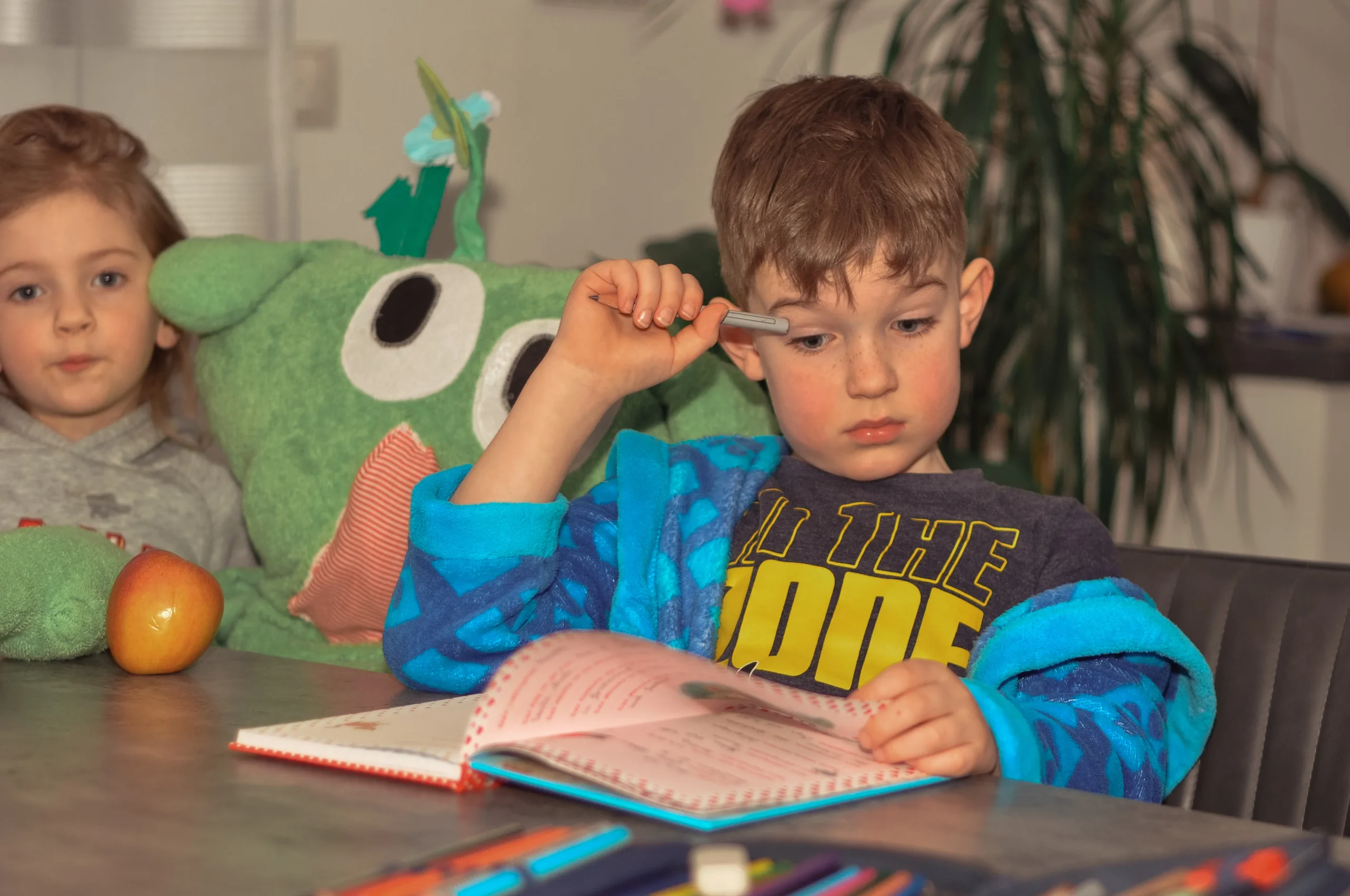Millions of kids and adults worldwide find it similar to solving an impossible riddle to read a book or send an email. Words appear to dance across the page, letters blur together in incomprehensible patterns, and despite all their best efforts, they never read easily. It is a day-to-day experience by people with Dyslexia and is a neurological syndrome in which Dyslexia affects an estimated 15-20% of the population as stated by the International Dyslexia Association.

There is a likelihood of sounds getting mixed up in the usage of ‘dab’ and ‘bad,’ as well as the insertion of phantom syllables into words, which can influence how a child reads. The comprehension level is impaired due to a lack of mental effort in decoding the labor, resulting in little output and difficulty in representing meaning. According to the National Institute of Child Health and Human Development, the cognitive effort required by a dyslexic student in reading is higher than that of a neurotypical student, resulting in excessive fatigue that hinders literacy activities.
More importantly, there is a psychosocial effect that is similar to those in academia. Talented children absorb stories of failure when they observe other children struggling to perform skills that they have mastered with relative ease.
Verbal Dyslexia (developmental phonological disorder) affects approximately 7% of individuals with Dyslexia, who often view it as encompassing not only speech problems but also reading difficulties. Word-finding problems are fairly common, especially word recall (or tip-of-the-tongue blocks), and are generally associated with sound substitutions (e.g., magazine in place of magazine). Additionally, they may struggle to follow verbal information presented in rapid-fire form. These are problems that are precursors to reading difficulties and can be manifested as early as the toddler stage.
Recent developments have explored the use of transcranial direct current stimulation (tDCS) as a method for enhancing neural plasticity during language therapy. Research conducted reveals that 70% of phonological working memory enhancement is achieved through specific interventions. To adults, telepractice websites offer undisclosed guidance on communication tactics in the workplace. Initial conventional dyslexia assistance must be merged with neurological rehabilitation and mental strength to enable prolonged enhancement.


Between the ages of 3 and 5 years, which is considered the language learning phase, the first symptoms of Dyslexia may be observed. There may be a late onset of speech, occurring over six months after the developmental attainment, along with the continued simplification of words containing more than a single syllable (e.g., “elephant” to “elephant”).

Dyslexia symptoms become evident when formal reading instruction begins. Children read haltingly, with great labor, and they often make guesses depending upon bass letters (reading an automobile, an automatic). The dissimilarity in spellings is abnormal–one-day phonetic guesses in spelling (“nite”), another day nonsense in spelling (“knite”).

Symptoms change; however, they continue into adulthood. Teens come up with high-tech workarounds, using audiobooks in their literature courses and employing speech-to-text software to write papers, but the existence of timed tests and foreign language courses still presents a challenge. Adults in the workplace report that they spend three times as much time writing reports as their peers, who struggle to scan emails with excessive information and often shy away from promotions that require filing documents.

Dyslexia and ADHD comorbidity rates of 40-60% form one of the most clinically relevant overlaps in neuropsychology. Similarities in genetics involve chromosomes 6 and 15, which confer neurobiological susceptibilities to both disorders. The effects primarily show the reading disorders other than dyslexia, which facilitates phonological processing, and ADHD results in the dysregulation of the frontostriatal loops that control executive functions. These two interruptions result in complicated learning patterns as the variableness of attention adds to the phonological deficits.
There are diagnostic issues because of symptom mimicry: a child who gives up on reading might be evading a decoding problem (Dyslexia) or behaving attentional inertia (ADHD). In neuropsychology, core deficits are identified using tests such as the Comprehensive Test of Phonological Processing (CTOPP) and Continuous Performance Tests (CPTs). Distinctive indicators are relative, such as phonological awareness specificity in dyslexia compared to the general distractibility found in ADHD.
The interference of Dyslexia is not solitary but is often accompanied by various neurodevelopmental differences that combine to form a complex learning profile. According to a study conducted by the National Institute of Neurological Disorders and Stroke, it is clear that at least 60-80% of persons afflicted with Dyslexia have at least one comorbid sedentary learning dissection. These are co-occurring disorders that share neurological mechanisms, including language processing, working memory systems, and the executive functioning pathway. The combination poses some academic difficulties on one side but is more comprehensive in terms of understanding methods of helping individuals with Dyslexia.

CAPD and Dyslexia are two conditioned things that are similar yet not the same and thus require a distinction to be made since they are subsumed as comorbid neurological disorders. Central auditory processing disorder dyslexia entails impairments in the capacity of the central auditory nervous system to process acoustic sound amid normal peripheral hearing. The most significant of these are the difficulties in sound localization, recognizing auditory patterns, and listening in background noise situations. Dyslexia, in turn, mainly affects working with and manipulating phonological information.
Multidimensional approaches founded on neuroscience play a crucial role in dyslexia treatment in an individual’s life. Systematic programs, including Orton-Gillingham and the Wilson Reading System, have reliable evidence of effectiveness as the evidence-based gold standard: Structured Literacy (SL). These approaches of dyslexia treatments are remarkably progressive in a successively articulated procedure: phonemic awareness, phonics, morphology, syntax, and semantics. The most significant feature of SL is that it is multisensory, i.e., students see, say, hear, and write the patterns in linguistics simultaneously. Redundant pathways may be formed when, as a child touches vowel teams on texturized surfaces, they also sing the sounds.
Yes, according to the Individuals with Disabilities Education Act (IDEA) of the US and Section 504 of the Rehabilitation Act, Dyslexia is considered a specific learning disability. This law imposes specific demands on learning institutions to such an extent that appropriate actions and amenity-dependent measures are to be scheduled to accommodate such students through Individualized Education Programs (IEPs) or 504 Plans.
The potential preschool signs include a delay in speech development that persists after age 3, observation of difficulty with rhyming patterns, an inability to master letter names, and a failure to learn a sequence of things, such as the days of the week. Early childhood educators must follow children who express their ideas in a very creative and complex way before they can use retrieval in words or engage in phonological play.
The risk of Dyslexia has been known to be 60-80% genetic, as per twin studies. Scientists have identified certain genes, such as DCDC2, KIAA0319, and DYX1C1, which are known to facilitate the movement of neurons in the brain. Family history - If one of the parents is dyslexic, the likelihood of the child developing a tendency towards dyslexia is 40 to 60%.
Although they both can influence language processing, their mechanism is different. Dyslexia is also a condition typically characterized by dysfunction in the encoding and rendering of written language, as phonological processing is compromised. Auditory Processing Disorder suggests a problem with sound message processing on the neuropsychological level and affects every facet of sound decoding. It not only means listening to conversations in noise but also enjoying musical notes.
The neurodiversity paradigm views Dyslexia as part of human natural variation in thinking rather than a pathology. It is verified by brain imaging, which indicates structural and functional disparities that bring both advantages and disadvantages. Most major tech giants approach individuals with Dyslexia to hire them due to their propensities for thinking spatially, as well as narratively, along with their problem-solving abilities.
Subscribe to our regular newsletter updates and stay educated!